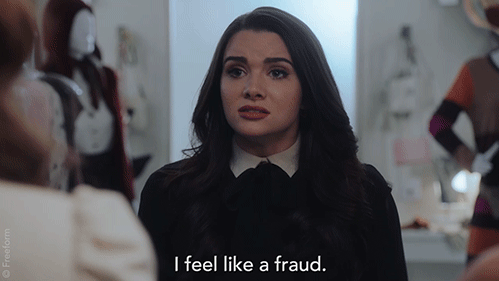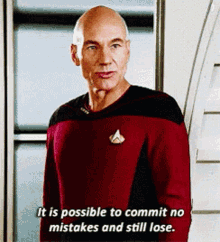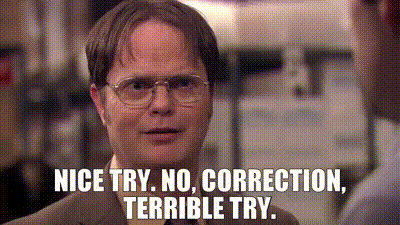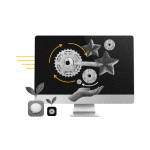



How to Overcome Imposter Syndrome in Career Transitions
November 6, 2024

Change is hard. Change is exciting. Change is welcome. Change is sudden. Change is inspired. But above all, change is —and it’s certain—and it’s what shapes our future. Whether in your daily life, your professional life or your personal life,- the world around us has changed and as a result, so have we. Balancing who we were before and who we are after adapting to change informs our ability to move forward, but that balance is tricky. How can we adapt to change, while still preserving the best of ourselves before that change happened? How can previous experience sustain a new path? How will we know if this change was for the better or worse? How do we balance who we were before with who we are now? These questions, among others, float like massive barges in the minds of people looking to change careers.
Shifting careers may be one of the largest changes someone can make in their lifetime. Moving from a position of comfort, certainty, and clarity to a position of unfamiliarity, relearning, and possibly restarting from a new position of influence is a lot to take in. I speak from experience.
I remember the first job I ever wanted was to be a mailman. I was probably eight or nine years old, and I saw a mailman delivering a package to my neighbor. There was something so fascinating about meeting people while you work, bringing them news and letters from loved ones or from people they were hoping to hear from, petting their dogs and giving them treats – I remember being so amazed that someone could be responsible for so much, and bring joy to others at the same time. Little did I know that feeling would guide me through all professional choices.
Fast forward through college, I finished with a degree in Psychometrics and Cultural Anthropology with a minor in biology. After that, I spent every waking moment in academic research preparing for a career in education. I got my Masters in Education in 2020, and was working full-time as a professional development manager and an adjunct for the City University of New York. In all my preparation and studying, the last thing I ever expected was that I would be unhappy. To be fair, I was not unhappy because teaching made me unhappy. I was unhappy because no matter how much I worked, or how many jobs I worked, teaching became increasingly unsustainable for my long-term life goals. Suddenly, I was confronted with a choice to change, or do my best to survive.
In April 2022 – I started as Associate Director of Learning & Development at 5&5. The choice to leave education behind, especially working with non-profit organizations and teachers, was a difficult one. I was able to combine the passion I have for education with the restaurant technology space – a space that I had never been part of before. As you can probably imagine, I was overwhelmed. Even if my skills as an educator were an asset; I felt like I didn’t belong in this world, and there are days where I still feel like I don’t. Suddenly I was aware of how new everything was, and how green I was too. In the weirdest of ways, I was never alone though, I had gotten to meet someone that I was not expecting to meet in a crowd of incredible people – an imposter.
The Oxford English Dictionary defines Imposter Syndrome as the persistent inability to believe that one’s success is deserted or has been legitimately achieved as a result of one’s own efforts or skills. To put in terms of career change – imposter syndrome diminishes our ability to connect skills from our previous career to a new one. To be very clear, the feeling I had was not one that was exacerbated by my colleagues or our teams. Imposter syndrome is a chaos that we cannot see. When I first started at 5&5, a new working environment, a new field, and a new responsibility – even if I had the confidence, I still felt like it was not enough; like I was not enough. I felt like I had to be perfect all the time and any margin of error or attempt to ask for help was a reflection of my inabilities. I could not find the balance I needed to connect my passion with my confidence.

Imposter syndrome can manifest before career changes as well. It may appear in questions such as “Can I do this?”, “What if I fail?”, “I wouldn’t know what I am doing”. It may also appear in interviews too if you feel the pressure to “answer correctly”. From my own experience, imposter syndrome was at its strongest in the workplace. I didn’t understand how to articulate what I was feeling because I didn’t realize what type of imposter I was dealing with, and how my actions made it worse.
According to the Imposter Syndrome Institute, there are 5 main types of imposter syndrome that are common in academic and vocational settings.

The Perfectionist, who’s primary focus is on “how” something is done. This includes how the work is conducted and how it turns out. One minor flaw in an otherwise stellar performance or 99 out of 100 equals failure and thus shame.

The Expert is the knowledge version of the Perfectionist. Here, the primary concern is on “what” and “how much” you know or can do. Because you expect to know everything, even a minor lack of knowledge denotes failure and shame.

The Soloist cares mostly about “who” completes the task. To make it on the achievement list, it has to be you and you alone. Because you think you need to do and figure out everything on your own, needing help is a sign of failure that evokes shame.

The Natural Genius also cares about “how” and “when” accomplishments happen. But for you, competence is measured in terms of ease and speed. The fact that you have to struggle to master a subject or skill or that you’re not able to bang out your masterpiece on the first try equals failure which evokes shame.

The Superhuman measures competence based on “how many” roles they can both juggle and excel in. Falling short in any role — as a manager, team member, parent, partner, friend, volunteer — all evoke shame because they feel they should be able to handle it all — perfectly and easily.
At the moment of career change, or other major changes in your life, more than one archetype can exist at the same time. When I left non-profit education to work at 5&5 – I desperately felt the need to prove I belonged. This manifested the “superhuman” and the “perfectionist” archetype. Every moment I perceived as failure was met with shame and uncertainty. What was arguably worse was that I chose not to say anything. I chose to keep the challenge of change to myself. How could I possibly help people if I could not help myself? This was the imposter at work as I was adjusting to a career change.
It wasn’t until I spoke to my colleagues, my manager, and my team with total transparency that I realized I was not alone. They felt the imposter in their own lives and many others that also switched careers to be at 5&5. The support was overwhelmingly positive. With my colleagues, we were able to be candid with each other which overcame the isolation change can elicit. With my manager, I received targeted, actionable feedback that allowed me to balance my workload with my ambition. With my team, I could be vulnerable and honest with what I didn’t know while still being solution-oriented. This completely validated my career change and gave me the confidence to lead forward through any obstacle.
Now that I am two and a half years into my career at 5&5 – the imposter and I are old friends because we can recognize each other. Part of embracing change, especially in a different career, is acknowledging that you are not alone in the change you are making. As you change, it is imperative that you talk to those around you who are experiencing the impact of the change you made, and to those around you who can support you as you adapt. The pressure to perfect amidst change is an impossible task, but one that becomes easier with systematic support from the communities around you. For our readers, you may be asking yourself the same questions on the precipice of your own moment of change. Remember, you are never truly alone, and while change can be scary – you are not alone. I am rooting for you!











Leave a Reply